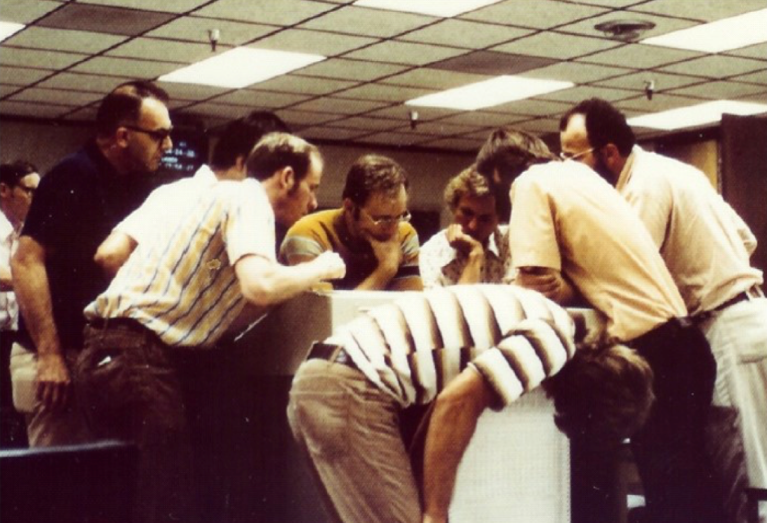
Alan Cummings
Co-Investigator on Voyager and several other missions; Senior Scientist at Caltech
Role on Voyager
Co-Investigator
Current role
Co-Investigator on Voyager and several other missions; Senior Scientist at Caltech
Hometown
Sierra Madre, California
What is your most meaningful Voyager moment and why?
I arrived at Caltech as an incoming graduate student in the late summer of 1967 and began work in the Space Radiation Laboratory, headed up by Robby Vogt and Ed Stone. I passed my thesis exam in March 1973 and I continued that summer with my thesis experiment, launching it on a balloon from Fort Churchill, Manitoba. It’s a long story, but something went wrong with the cut-down mechanism and we lost our experiment — to the Russians! We did eventually get it back, but it was a hopeless pile of junk. So, I was put on a new project that was just starting — the Cosmic Ray Subsystem (CRS) experiment for Voyager.
I was put in charge of testing the detectors for the Low Energy Telescope (LET) and The Electron Telescope (TET). One component of the LET telescopes was the front covering that we called a window, which was made of aluminum and very thin, 3 microns thick. The windows were mounted on circular lids that screwed onto the bodies of the telescopes. We were worried that the technicians working around the spacecraft would accidentally poke a hole in them, so we had spares available just in case. That led to my first memorable moment: I got to inspect the windows just before the spacecraft was sealed up for launch. I climbed up in there and inspected the windows. That was exciting!
My next memorable moment was when Voyager 1 encountered Jupiter, the first planetary encounter for either Voyager. Since Ed was the project scientist, I sometimes got to occupy the CRS chair at the table where the scientists gathered to discuss what discoveries were going to be presented at the press conference the next morning. I remember seeing the image of the moon Io for the first time and thinking that the Caltech students had engineered a brilliant stunt — they must have substituted a picture of a poorly made pizza for the picture of Io! All that orange and black on Io changed our thinking about the moons in the solar system. I think most of us thought they would all look more or less like our own Moon. But, wow, how wrong was that! The discussion at the table about whether we were looking at an old or a new surface was fascinating and was put to rest a few days later with the stunning discovery of the volcanoes erupting in real time on Io.
Finally, for me, a cosmic-ray physicist, one of the highlights by far has been the crossing of the heliopause, the boundary of the Sun’s magnetic bubble, into interstellar space by Voyager 1. The Voyagers will orbit the center of the galaxy forever. It is humbling to think that I’ve been a part of such a fantastic mission.
Looking back, I think losing that balloon in summer of 1973 was a good thing, as Voyager has been a career mission for me and I could not imagine a better one.
(This image comes from 1977, when the CRS team got its first look at the data Voyager 2 was taking. Alan Cummings is bending to read data as it prints from the printer.)



























